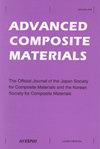The contribution of numerical models to Lamb wave driven NDT processes – part I: model building
IF 2.3
3区 材料科学
Q3 MATERIALS SCIENCE, COMPOSITES
引用次数: 1
Abstract
Components made of fibre-reinforced polymers (FRP) may suffer from various types of damages, such as cracks or delamination. In order to monitor the structures’ material condition, non destructive testing (NDT) methods have emerged – among them, the use of ultrasonic waves. Inter alia, research focused on Lamb waves (LW), which offer promising conditions for NDT processes. However, prior implementation in a specific production environment, practitioners are faced with many open questions such as excitation frequencies to be used or which mode to select for defect identification. Therefore, the study aimed at demonstrating how a finite element analysis (FEA) can assist the experimental design of an LW driven NDT process. For that, a numerical model was developed, capable of computing LW propagations in an exemplary component: Stringer-stiffened C-FRP panels. The study was divided into two parts: In this part, all information regarding the model building is presented and principal functionality demonstrated. In the second part, the FEA is validated and then used to perform parameter studies, highlighting important conditions for practical application. The results of the present paper showed that stiffeners provoke varying interactions with LW modes – effects that increase wave field complexity but do not limit defect identification within or behind the stringer.数值模型对兰姆波驱动无损检测过程的贡献-第一部分:模型建立
本文章由计算机程序翻译,如有差异,请以英文原文为准。
求助全文
约1分钟内获得全文
求助全文
来源期刊

Advanced Composite Materials
工程技术-材料科学:复合
CiteScore
5.00
自引率
20.70%
发文量
54
审稿时长
3 months
期刊介绍:
"Advanced Composite Materials (ACM), a bi-monthly publication of the Japan Society for Composite Materials and the Korean Society for Composite Materials, provides an international forum for researchers, manufacturers and designers who are working in the field of composite materials and their structures. Issues contain articles on all aspects of current scientific and technological progress in this interdisciplinary field. The topics of interest are physical, chemical, mechanical and other properties of advanced composites as well as their constituent materials; experimental and theoretical studies relating microscopic to macroscopic behavior; testing and evaluation with emphasis on environmental effects and reliability; novel techniques of fabricating various types of composites and of forming structural components utilizing these materials; design and analysis for specific applications.
Advanced Composite Materials publishes refereed original research papers, review papers, technical papers and short notes as well as some translated papers originally published in the Journal of the Japan Society for Composite Materials. Issues also contain news items such as information on new materials and their processing."
 求助内容:
求助内容: 应助结果提醒方式:
应助结果提醒方式:


